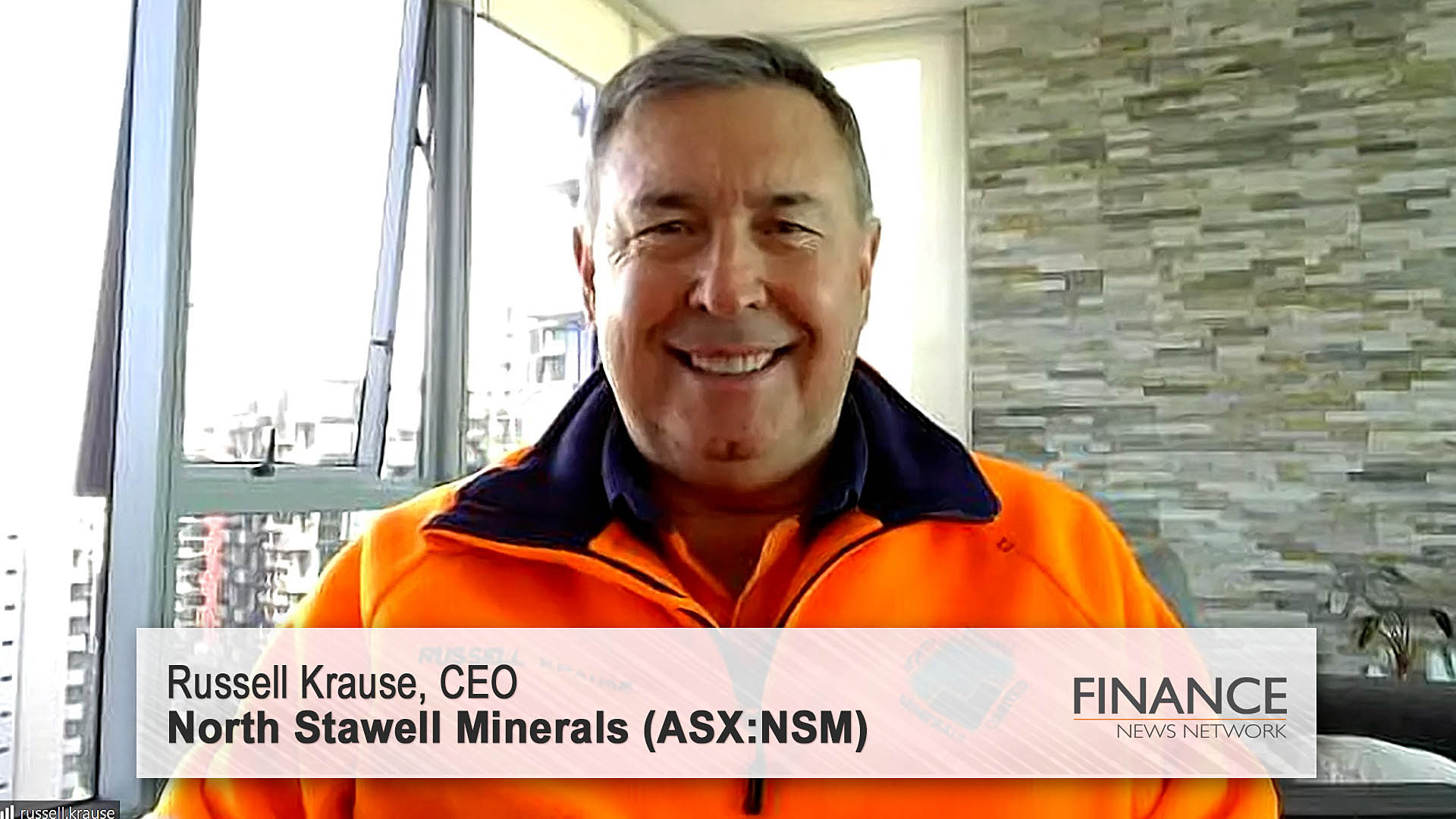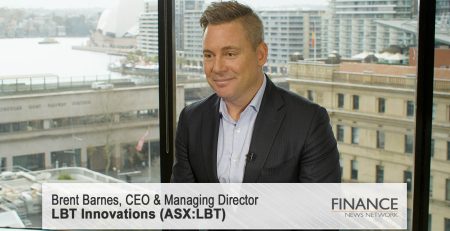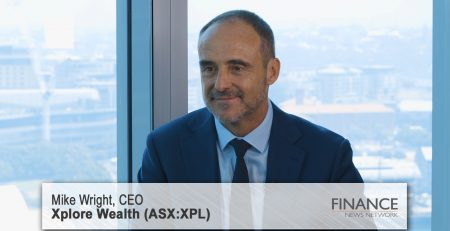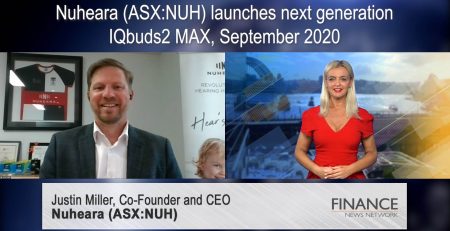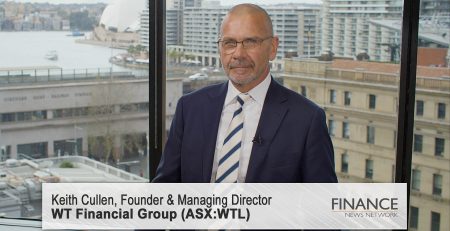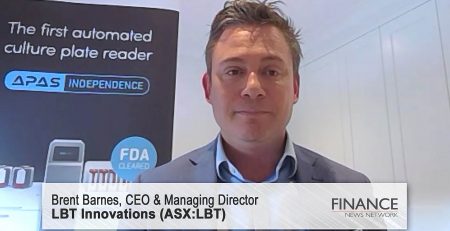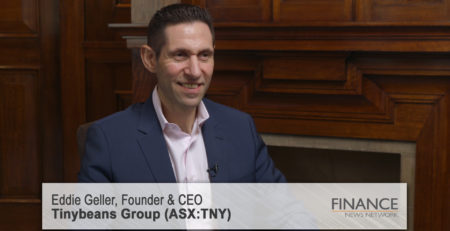North Stawell Minerals (ASX:NSM) uncovers high-grade gold mineralisation at Darlington
North Stawell Minerals Limited (ASX:NSM) CEO Russell Krause provides an update, discussing progress to date, the most prospective targets, and milestones ahead.
Tim McGowen: We're talking today with North Stawell Minerals (ASX:NSM), market cap of around $20m. The company's a gold explorer focused on the Stawell Corridor, which is in the centre of Victoria's Golden Triangle. We have with us their CEO, Russell Krause. Russell, welcome back to the network. Thanks for your time.
Russell Krause: Thank you very much for having me.
Tim McGowen: It's been a few years since the IPO. For those new to the North Stawell story, can you talk through the story so far?
Russell Krause: Certainly. I think the IPO was September '20. It was a $20m capital raise, oversubscribed and quite successful. The IPO came out of the relationship with Stawell Gold Mines. So, North Stawell Minerals is effectively the exploration arm for Stawell Gold Mines, and our job is to go and find another Stawell gold mine, such as the Magdala dome, and that's our job to search up and down the corridor. Our tenements, as you move further from Stawell, are under Murray Basin cover, so a sedimentary layer, so there's no outcropping. So, all of the mines that have been in and around the Stawell region are all outcropping. We believe that the mineralogy is exactly the same up and down the corridor, both to the north and south, and that whilst it may outcrop at Stawell, it continues both north and south and should host the same sort of ore-bearing rocks or gold-bearing rocks. We've done, over the course of time, a lot of geophysical work, a lot of geochemical work. We identified probably 20 major targets up the corridor. And with those targets, we then tested them with an air core rig, vertical holes. That was our phase one drilling campaign. We discovered that, of the 20 so targets that we tested, probably 17 of them looked fairly prospective. There was confirmation that the mineralisation occurred up and down the corridor as we believed. And then we've started this year a phase… Well, the end of last year and this year, a phase two drilling campaign, again with an air core rig, where we've, rather than vertical holes, we've drilled angle holes. And now, whilst that program is still ongoing, probably starting next week, we'll bring a diamond rig in and start to test some a little bit more seriously and at greater depth to just confirm the size and nature of structures, etc. So that's where we're at since the IPO.
Tim McGowen: You've been busy, Russell. Now, you mentioned Darlington Mine. You released some results there recently. Can you talk us through the significance of those results?
Russell Krause: Well, the Darlington Mine was only a small mine. It was only about 10km away from currently where the Stawell Gold Mine is. It only produced, well, a couple of thousand ounces, from memory, but at quite high grade. So, obviously what had happened there is the old-timers discovered quite a high-grade shoot, just followed it down and mined it. What our geophysics work sort of confirmed, that there is a large dome structure underneath that. We're hoping that it's a basalt dome similar to what's at Stawell. We haven't tested that yet. But what we've done and what we've discovered with the air core drilling, both phase one and phase two, is that we've got quite significant grades. So, we've intersected one of those high-grade shoots. What we intend to do with that now is step back from that, put a diamond rig in it and under it, and test it at a deep, greater depth. And, if our theory is correct, we believe that that chute is more or less in the pressure dome above the basalt dome. And, if that's right, it may or may not be another Stawell-type situation. It's got sufficient size to contain a decent deposit. We can tell that because the strike's over about 600m or thereabouts at the moment, and it's definitely open in one direction. So, it appears to have the scale that would enable us to be hopeful that this is a fairly prospective target.
Tim McGowen: And, apart from Darlington, you mentioned quite a significant number of other projects that you're looking at. How are you managing these in the expectations of where you put your dollars?
Russell Krause: Well, obviously, as an exploration arm, I mean our job was to check or try and check the mineralisation in the whole corridor. We've done that and, as I said, we've identified probably targets, and we've prioritised those targets. Wildwood was the one that we first drilled, and whilst the RC drilling campaign was very successful, the diamond campaign that was undertaken initially probably wasn't as successful. But we've gone back and reevaluated that work and, with the benefit of the additional geophysics work that we've done and also some passive seismic and also some geochem work, we've actually got a much better idea of where that orebody's likely to be. So, in this current diamond campaign that is going to commence next week, we will definitely be putting a couple of holes into Wildwood in an area that we think will either confirm the resource status or otherwise. But Wildwood's there and it's definitely a decent target. We also have Caledonia and Darlington, which are relatively close to each other, 6-10km each away from Stawell Gold Mines. Then we've got Lubeck Tip, Forsaken, Germania, Old Roo, Wimmera Park, Challenger, Lubeck itself, Ashens, etc. So, we've got quite a number of targets. And we prioritise them: (1) proximity; (2) the grade that we're getting. And when I say "proximity", obviously the less cover, so the closer to Stawell, the easier it is for us to do more work on them. But size of the target. We're looking for the structures. We're trying to find another Stawell-type deposit. Stawell Gold Mine's approaching its 3 millionth ounce in production in modern times. That's the sort of thing we're looking for. We're not looking for, you know, 50,000 or 100,000 ounces, which currently is sort of circa what Wildwood is at the moment.
Tim McGowen: There are some incredible numbers coming out of that Stawell. So, can you talk us through where you're positioned in regards to funding? There's lots of opportunities, but it's an expensive business.
Russell Krause: It is an expensive business, and we are an exploration arm, and as an exploration arm, we do not have capital. We do not have income, but we spend capital. We, I think at the end of the last quarter had circa $5m in the bank. At some point in time, obviously, you know, we will require capital. We are very lucky that, given our ownership structure, that we've got very wealthy major shareholders and that have also indicated support. So, we're not in a position where we're one of those companies that struggle to actually access capital. And we've got a number of ways of doing it. You know, we can go back to our major shareholders or we can go to the market in the more conventional sense or a combination of both. So, as the timing's right and, you know, we believe that we've got the appropriate targets and we are ready to actually do that sort of thing, we'll take advantage of the situation one way or another.
Tim McGowen: And, Russell, you sound like you've got a really busy timeframe. Looking ahead, what are some of the milestones you're trying to achieve over the next 6 to 12 months?
Russell Krause: Well, the main thing initially is to get the current drilling campaigns that we have, both the air core campaign, this phase two finished… You know, we're in agricultural area. We're very conscious of the farmers' requirements, etc. We're aware that we own the mining leases below the ground, but the surface is owned by the farmers, and they've got to operate their businesses and enterprises on that ground. So, we have to fit in with their crop cycles and their lambing season and everything else that sort of goes on. Plus the weather. The weather's a fairly serious consideration with our drilling programs. And the reason for that is we can't get heavy equipment on farmland when we've had plenty of rain. So, the winter is basically out when the wet comes because we'll just bog up, chop up paddocks, all the things that we don't wish to be doing. So, our aim is to try and get most of the drilling done by May in the agricultural areas. And where we've got a little bit of higher ground and around some of the reserves and other areas, we can continue the program in those areas. So, it's sort of working with the community in order to keep it going. But what do I expect out of that? Well, I think what the shareholders can expect to see is that we've got still quite a number of results pending. And then we've got that diamond program which will come in and start Easter. And, once that starts, hopefully we'll get some confirmation on some of these targets, which should be very exciting and encouraging.
Tim McGowen: Russell Krause, thanks for your time.
Russell Krause: No worries. Thank you.
Ends
Copyright 2023 – Finance News Network
Source: Finance News Network

